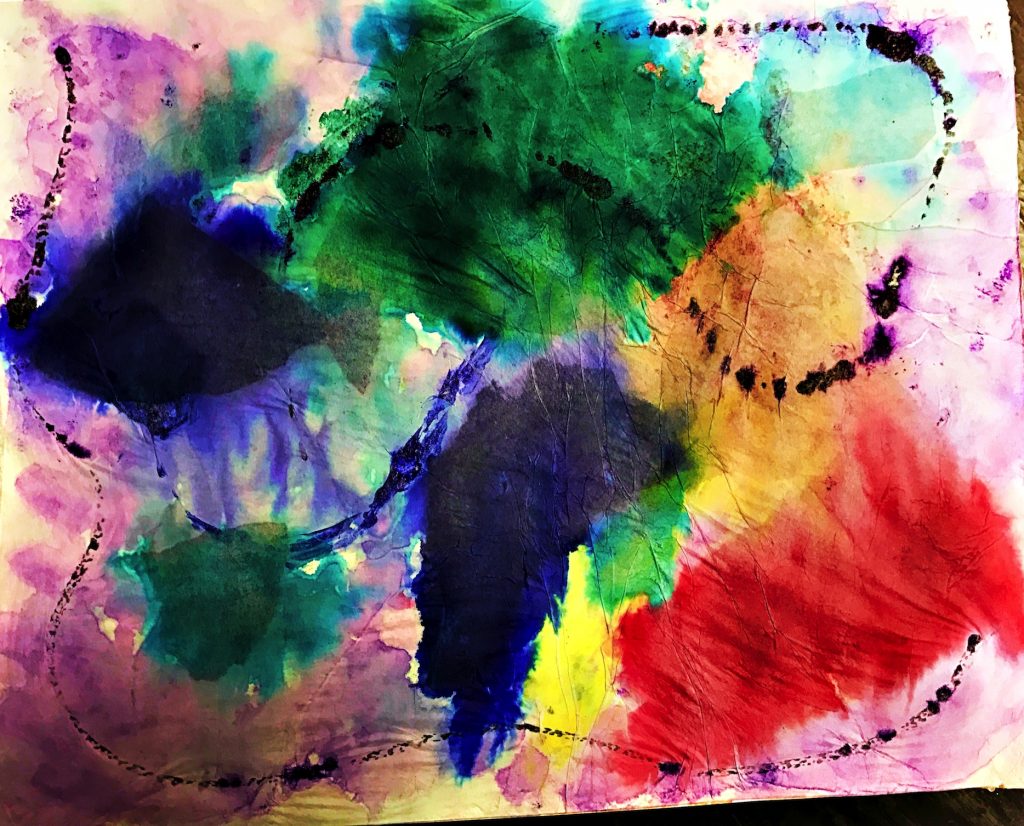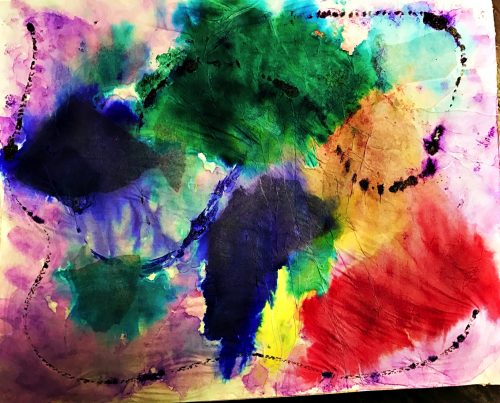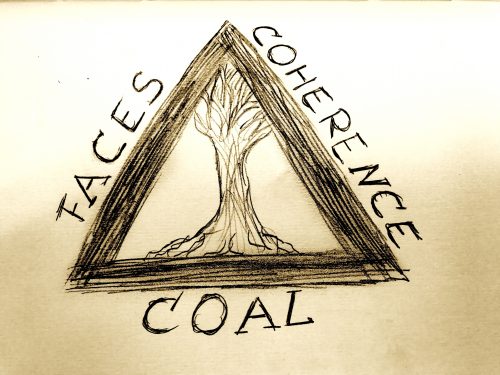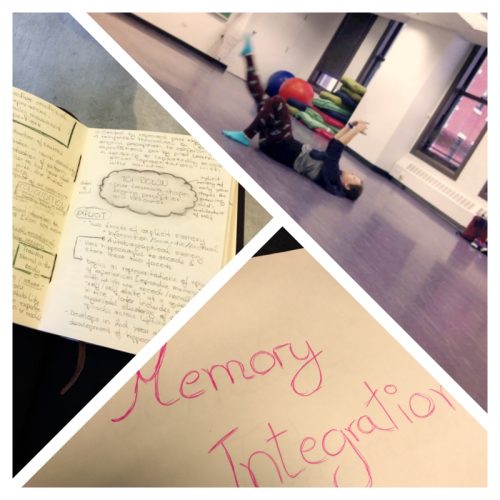
#Thesising – Part 2

Artwork in response to “Memory Integration”
When I started the process of thinking about a thesis topic, I had a thousand ideas. I knew from the start that I wanted to do a self study and over the course of the first year there were a few themes that stood out to me. The first one was my national identity – being German – and all the sensations, images, feelings, and thoughts that are coming with that identity. Therefore, when we had to write a literature review during our second summer I decided to focus on the topic of transgenerational transmission of a large-group chosen trauma in postwar Germany. I knew from research that I had done prior to starting the program that taking responsibility for the Holocaust and preventing something similar from ever happening again was inseparably embedded in the concept of German national identity. However, the more I looked into the topic and wrote about it, the less I was satisfied with just focusing on a tiny, little aspect of my personal experience. In an attempt to broaden the scope of my research, I started looking into the concept of intersectionality and how my own intersectionality influences my experience of a becoming dance/movement therapist. Yet, in the US the term is primarily used in the context of power and oppression, and while I acknowledge that this is an important topic, it was (once again) not what I was trying to communicate. I really was more interested in how different parts of my self or selves are influencing my experience of becoming a dance/movement therapist. So I sat down with our research coordinator, we talked about it, and came up with the magical word: INTEGRATION. Interestingly, the theoretical framework that I had chosen to work from as a dance/movement therapist – Interpersonal Neurobiology or IPNB – saw this word as one of the core concepts. Coincidence? Probably not.

Own conceptualization of IPNB and integration
As a result I decided to explore the concept of integration, based in the framework of IPNB, and in the context of my own professional development. IPNB talks about 9 domains of integration (integration of consciousness, bilateral integration, vertical integration, memory integration, narrative integration, integration of selves, interpersonal integration, temporal integration, transpirational integration) and how creating an integrated state in and between all those domains promotes health and well-being in brain/body, mind, and relationships. Therefore, for my research process, I decided to focus on one domain each week, setting the timeline for my data collection process to 9 weeks. I start each week with a basic literature review on what integration in the week’s domain means (usually on the weekend prior to it). Then, on Mondays, I lock myself in a small studio with a bunch of art supplies and my computer. I write down the domain of the week and do some mindfulness practice to become fully present in the moment and to be able to become aware of what is going on inside of me. Next, while keeping the image of the written domain in front of my mind, I respond to it. My response can be either in the form of movement or visual art. Finally, I respond to my experience while responding to the written domain with the other form of expression – so if I started with movement, I respond to my experience of responding with visual art, and vice versa. Acknowledging that this way of doing data collection is state dependent (so dependent on how I feel in a specific moment or what is going on in my life at the time of data collection) I am repeating exactly the same process the Friday of the same week. I see this as a way of “zooming in” to generate more detailed data.

1. Literature review, 2. Focusing on domain, 3. Respond
Obviously, the data collection process, which I am currently in until mid-December, is only a small part of the whole research process. Starting at the beginning of next year and throughout February, I will analyze the data that I generated during the data collection process, looking for themes that came up within a week/ domain or across weeks/domains. At the same time, I will write the first draft of my literature review, methods, and results sections. Lastly, I will write the introduction and discussion section (probably around April) and complete my final draft of the thesis at the beginning of May. But the process does not end there. At the end of May, I am sending my final thesis draft to my thesis advisor, to get feedback from her. Then, at the end of June, I am sending the updated final draft to my reader – an uninvolved party that will read and evaluate the thesis. Finally, after around 11 month of actually working on the thesis, I will submit it at the beginning of August, 2017. By the end of July, I will further present the results of my thesis at the DCAT’s Student/ Faculty Concert in the form of a dance performance, as well as (maybe) an art gallery.
As you can see, research does not have to be boring and dry. You can use art making in the process of data collection, data analysis, and even presentation of results. You also see that the process can take quite a while, usually anything between 3 month and 2 years after graduation. In any way, it will be an enriching experience, significantly supporting the professional identity that you are trying to build. So don’t be afraid and enjoy the process!
